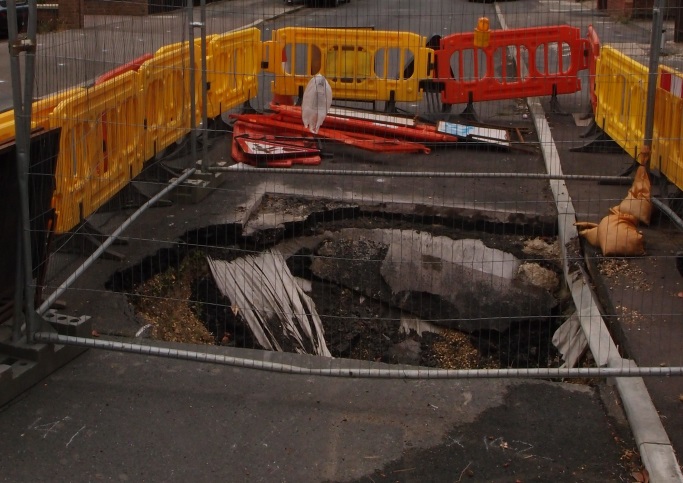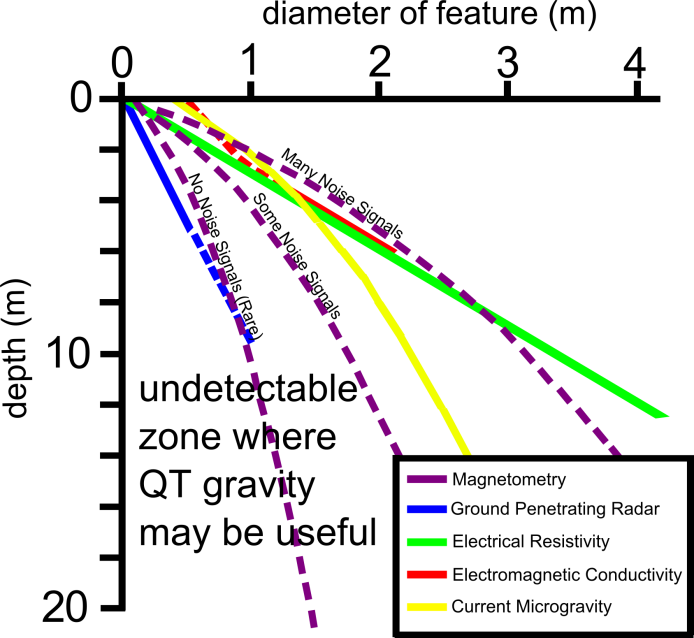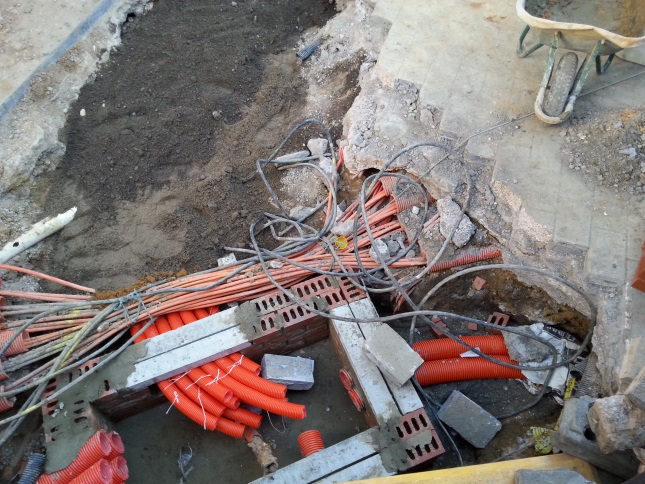Knowledge of the underlying ground conditions is vital for civil engineers, whether breaking ground (e.g. for street works) or designing new buildings.
Typical geophysical targets in civil engineering include buried utilities, mineshafts, sinkholes, solution features, caves and low density ground.
Failure to identify these features has major, and occasionally extremely dramatic, consequences including:
- Increased Costs (e.g. in the UK alone, the estimated cost of street works is £5 billion/year (Burtwell et al. 2006)
- Health and Safety risks (e.g. sinkholes leading to infrastructure failure such as in St. Albans in October 2015 (BBC News 2015) or utility strikes on buried pipes and cables)
- Wasted time (e.g. for repairs of damaged utilities as a result of poor location information and resulting roadworks)

Current geophysical technology
Geophysical technologies all have 3 main considerations which affect what they can or cannot detect:
- Size of the signal, determined by the target feature’s size, depth and contrast in the measured physical property with the surrounding soil or geological background.
- Resolution of the instrument, in terms of repeatability, precision and nature of the signals measured (potential field, EM waves, electrical fields, etc.).
- Noise on the measurement from nearby sources (e.g. ferrous debris, power lines or vibration) and capability to discriminate between noise sources and desirable signal.
Some of the main techniques are shown in the figure below. Three of these are active techniques i.e. require a signal to be injected into the ground (ground penetrating radar (GPR), electromagnetic (EM) conductivity and electrical resistivity) which can be severely compromised, especially in terms of depth penetration by the wrong ground conditions (e.g. wet clay). The other two (microgravity and magnetometry) are passive techniques which measure a potential field which are less limited by depth, providing the target is large enough. However, the maximum resolution is rarely realised as signals such as vibration and above ground structures create noise sources which cannot be distinguished from the target of interest. This leaves an area where current technologies can struggle to assess the ground conditions, especially for smaller and deeper targets where a new technology such as a quantum technology gravity meter could be a game changer.

The benefits of quantum technology gravity instruments
In Civil Engineering we aim to bring quantum technology gravity instruments, based on atom interferometry out of the laboratory and in to the real world to solve the issues mentioned above. The main advantages of using quantum technology instruments to replace existing gravimeter instruments are twofold:
- Atom interferometery promises to produce an instrument free from drift, and with lower instrument noise than existing instruments due to the lack of mechanical parts and the uniform nature of atoms as test masses. This will improve both the repeatability and accuracy of measurements, and allow smaller changes in the gravity field to be theoretically detected.
- The use of a single laser to interrogate atom clouds at two different heights almost simultaneously (i.e. at the speed of light) allows a gravity gradient instrument to be constructed. As many of the noise sources which currently limit the use of gravity will be common to both atom clouds (e.g. vibration, microseisms, tides etc.), these noise sources will be suppressed in the resulting calculation. This means measurements can be taken which more accurately correspond to the density contrasts of the features of interest rather than noise anomalies. Additionally readings can be taken more rapidly as the need to measure for a long time to average out environmental noise is greatly reduced.
These two features make the new instrument practically and commercially much more viable for detecting a wider range of different features below the ground which will help to greatly reduce the risks hidden within the ground.
Contact Dr Nicole Metje for further information on this theme.

- BBC News (2015). "Sinkhole opens up on street in St Albans." Retrieved 11/05/2017, from http://www.bbc.co.uk/news/uk-england-beds-bucks-herts-34410423.
- Burtwell, M. H., M. Evans and W. McMahon (2006). Minimising Street Works Disruption: The Real Costs of Street Works to the Utility Industry and Society. London, UK, UK Water Industry Research Limited.